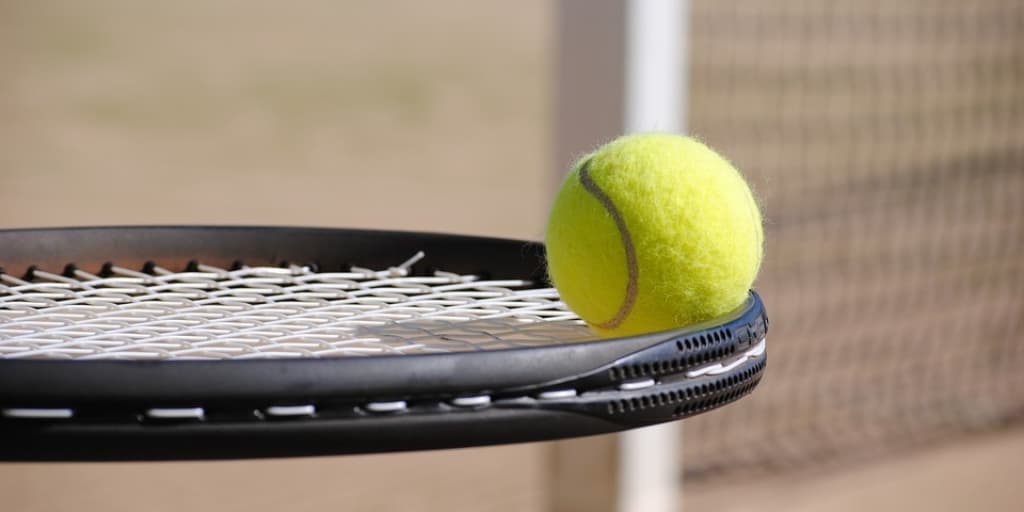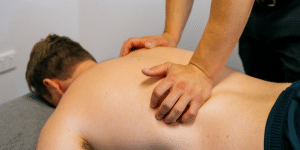How to treat Tennis Elbow

What is Tennis Elbow?
Pain on the outside of the elbow often spreading to the forearm and hand, combined with reduced grip strength is described as lateral epicondylitis, more commonly known as ‘tennis elbow’. This description is misleading as it is not limited to tennis players – there are many other types of repetitive gripping activities which can also cause the symptoms of lateral epicondylitis.

Pain and often tenderness is experienced on the outside bump of the elbow (lateral epicondyle). The various forearm muscles that bend the wrist and fingers backwards which are important in gripping activities, all attach onto the lateral epicondyle by one tendon (common extensor tendon). Strain on this area is usually due to overuse (although in some circumstances can be caused by an acute injury), which can result in pain.
What causes Tennis Elbow?
The actual pathology causing lateral epicondylitis is poorly understood. However, in persistent cases it is thought to be explained by overuse and degeneration of the common extensor tendon or at least part of it. This overuse is generally associated with lots of gripping such as in manual work, or any activity repeatedly using these extensor muscles.
In an acute injury, such as a sudden overstretching or overloading of the common extensor tendon, there can be tears in the tissue. This stimulates an inflammatory response, which is part of the body’s normal healing process. These symptoms may resolve within a few weeks with appropriate rest and gentle exercise. However, some will go on to demonstrate the more common degenerative changes associated with lateral epicondylitis.
Although the actual cause of lateral epicondylitis is inconclusive, there is evidence that changes in muscle strength and coordination of the gripping muscles, plus changes in the body’s pain systems are involved in exacerbating the degenerative changes in the tendon.
Traditionally lateral epicondylalgia has been difficult to treat, partly due to its chronic nature, but also because treatment has not addressed all of the possible issues contributing to this degenerative condition.
How can Physiotherapy help your Tennis Elbow?
Acute injury
If you have suffered a specific injury causing pain at the elbow within the last 2-3 days you may require some anti-inflammatories, and to avoid painful activities. This will give the body a chance to heal. A pharmacist can advise you on appropriate anti-inflammatories. Your physiotherapist can then advise you on exercise and a gradual return to gripping and lifting or other activities that were painful initially.
Chronic or recurrent symptoms
Your Ethos Health physiotherapist will aim to reduce your pain, restore any reduction in movement, and prevent recurrences by addressing muscle weakness and coordination, and review your functional technique when performing aggravating tasks. Your physiotherapist can assess how much the different possible components of your elbow pain are contributing to your symptoms and advise you on various techniques and exercises to reduce stress on the painful tissues.
Depending on the assessment findings your physiotherapy treatment may include:
- Exercise: is a crucial part of getting your elbow better and preventing a recurrence of your symptoms. This should not only include stretching and specific strengthening of the muscles in the forearm that move the wrist and elbow, but all muscles throughout your upper limbs. This is because for many, this pain may have been present continuously, or with frequent recurrences for months before presenting for treatment. This results in a general deconditioning and weakening of the muscles in that area and explains how many people with this condition describe the frustrating circle of doing something that aggravates the symptoms, resting until the pain resolves and then returning to the same activity, only to find that the symptoms flare up again, perhaps then taking longer to settle.
The exercise below is an example of a basic stretch you can try before seeing your physiotherapist:

Keep the elbow straight with the palm of your hand facing down, grasp the involved hand and bend wrist downward until a stretch is felt. Hold stretch for 15 seconds and repeat 3 times. Repeat this 4-5 times a day particularly after doing any task that involves gripping, or using the muscles in the forearm. Once you release the stretch any discomfort must go immediately. If there is a lingering soreness it is likely that this exercise will only aggravate you, so do not do this until you seek advice from your Ethos Health physiotherapist.
- Manual therapy: may include mobilisation of both the elbow and neck. Although you may not be experiencing neck pain, treatment of this area may be necessary to address the sensitivity to touch in your elbow. Often these are techniques your therapist can teach you to do at home to help reduce your elbow pain.
- Taping/Elbow straps: may be useful to help you to maintain your activities at home and work with less pain and aggravation of your symptoms. These methods are however not an alternative to doing the necessary exercises prescribed by your therapist.
- Posture: refers both to the way you sit and stand but also the position of your wrist and hand when you are doing the activities and tasks that you find aggravate your symptoms. Studies have shown that people who suffer from chronic lateral epicondylitis frequently demonstrate poor functional positions, which means that these muscles are under unnecessary strain. This maybe because of the way you automatically do things or because your work tools or area do not suit you, and you have to adopt postures that are harmful for you. In which case it may be necessary
to have someone assess you in your work place for example to highlight any problems and make recommendations.
There is limited evidence for other forms of treatment such as cortisone injections, acupuncture and shock wave therapy. Like strapping or braces they may give some temporary relief, but their key contribution is to enable you to commence the necessary strength retraining.
Returning to work or sport
Your Ethos Health physiotherapist will work closely with your doctor, employer and/or coach to recommend appropriate work tasks or training, throughout the graded process of getting you back to your full work or playing capacity.
If you are experiencing elbow or wrist pain, contact us here or book an online appointment today






